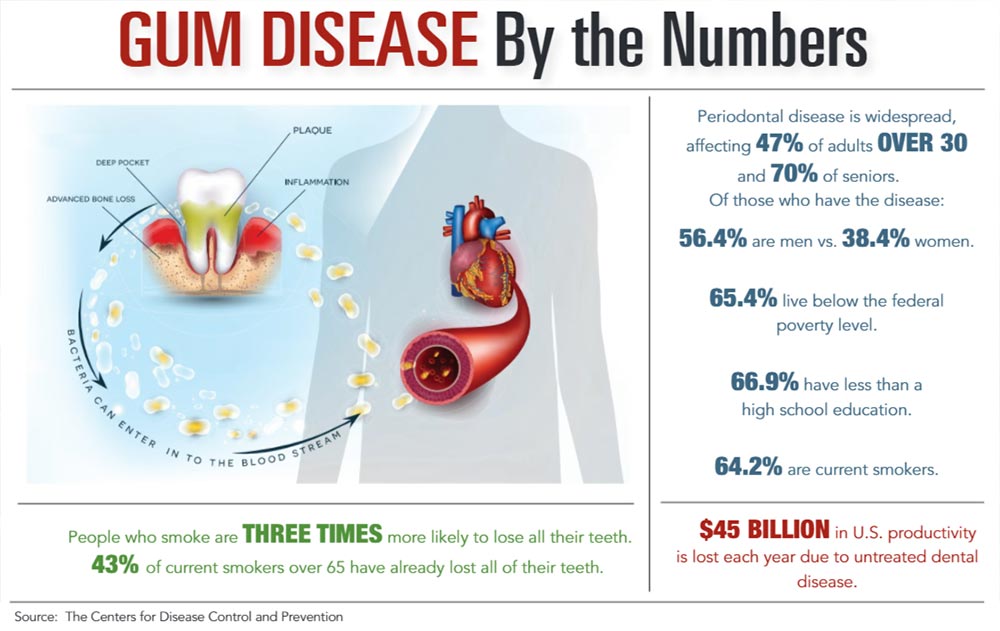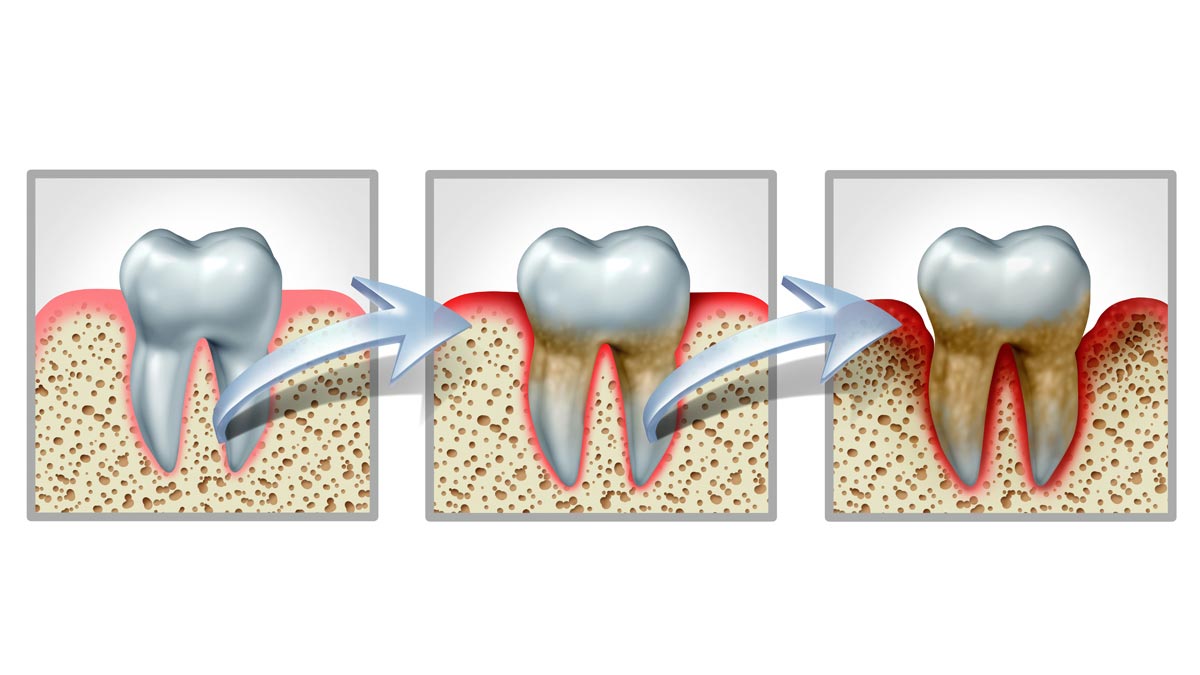Spending an hour talking to Dr. Neely Carraway about gum disease is pretty gross. She paints word pictures to describe what is going on in our mouths that we are (blissfully) unaware of and perhaps (dangerously) unprepared for.
Gum disease seems like a topic most of us have some familiarity with. But not to Dr. Carraway, who practices at Wood Creek Dental in Landrum and Meadow Creek Family Dentistry in Inman. She rattles off statistics and procedures, interspersed with her very personal approach that includes “Bacteria smells” and “Imagine if you left squash casserole out on your counter for two days.”
Her delivery is accessible and understandable and often pretty funny. But the message is very serious. Gum disease is nothing to laugh about.
It all starts with bacteria that gets left behind either because of lack of brushing or flossing or – and this is important – not brushing or flossing correctly. Left unattended, even for a day, that bacteria can start to turn to plaque and eventually to calculus (aka tartar) and inflammation of the gums.
Enter stage one of gum disease: gingivitis. Most of us think of gingivitis as just bad breath – we have TV commercials to thank for that – and that is part of it. Explained Dr. Carraway: “Bacteria left in your mouth smells and that’s what gives you bad breath. There’s a very distinct smell to periodontal disease. Most of us know that smell.”
The bad news is that this bad breath cannot be washed away by a few swishes of mouthwash. But the good news is that, at this stage, gingivitis is reversible.
“If a patient seeks out professional care and improves their oral hygiene, it can totally go away,” said Dr. Carraway.
If not, it can progress to periodontal disease, which can cause inflammation, bleeding gums and eventually – if left untreated – tooth loss. Potentially even more dangerous, however, is the inflammation itself. Because what starts in your mouth doesn’t stay in your mouth.
According to the Mayo Clinic, inflammation associated with gum diseases can contribute to heart disease, endocarditis, premature birth and birth complications, pneumonia, rheumatoid arthritis and some types of cancers.
“Gum disease alone doesn’t lead to one of these things,” noted Dr. Carraway, “but if you already have one of these conditions or you are prone due to behavior or genetics, the inflammation you already have in your mouth can (get into your bloodstream) and make these issues worse, causing them to progress, and you to have more complications from them.”
Certain behaviors and genetic predispositions can make gum disease more likely, Dr. Carraway said. Among them are: Smoking and tobacco use, age – seniors are more prone – genetics, stress and obesity.
What about diet and nutrition?
“There are some studies that suggest a balanced diet helps to maintain periodontal health and nutritional supplements and dietary components can affect healing after periodontal surgery,” she said. “Some studies suggest high sugar, high saturated fat and low fiber intake can cause an increased risk of periodontal disease.”
Periodontal disease progresses slowly from mild to very severe and, unlike its gingivitis, it is not reversible. But it is treatable. With a mild to moderate case, a scaling and root planing that goes deeper to the root than your regular cleaning is in order. That, coupled with a more aggressive schedule of cleanings – every three to four months instead of every six – may be enough to maintain the improvement from a scaling.
If there is more serious bone loss, a Laser Assisted New Attachment Procedure may be called for. This laser surgery is hardly new. The procedure, developed in the 1990s, has been successful in targeting and reducing inflammation, improving gum attachment and generating new bone growth to improve the outcome of a periodontally affected tooth.
The procedure, she said, has become more popular in recent years and “definitely has advantages over traditional periodontal surgery.” Healing from a LANAP procedure, for example, is less painful and faster. And “some of the results are pretty impressive,” Dr. Carraway noted, while pointing out that “LANAP isn’t for everyone. There’s a kind of a sweet spot because you have to have enough bone loss where it makes sense, because it isn’t cheap.” But too much bone loss may exclude you, leaving you with tooth extractions as the last option.
Why isn’t the LANAP procedure more well-known – like LASIK eye surgery?
“A lot of dentists slowly take on new procedures, especially with technology. You may feel uncertain: Is it going to work, what’s the hype all about, is this actually a good thing to do? Many will wait for more research to come out or for the kinks to get worked out before they want to incorporate new technology into their practices,” Dr. Carraway said.
Whatever procedures come next, the first step is for the patient to be aware that something is not as it should be.
Be on the lookout for red puffy gums, bleeding, loose teeth, bad breath or tender gums. Dr. Carraway also suggested, “When you start to have bone loss you may notice teeth may look longer or taller. That’s because the base of the tooth was once covered by gum and bone. When you start to have that bone loss and the bone drops down, the gums will follow. It gives the appearance of taller or longer teeth. If you start noticing any of these symptoms, you want to get to the dentist and not let things get worse and worse.”








